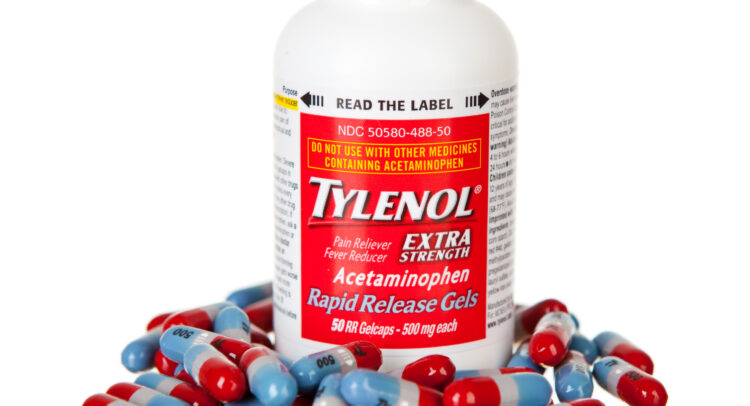This article is sponsored by College Readiness Consulting!
Kenvue (NYSE: KVUE) Stock Analysis: Dividend, Debt, and Rate-Cut Upside
A Defensive Consumer Health Giant with Rate-Cut Leverage
Kenvue Inc. (NYSE: KVUE) is a global consumer health leader formed from Johnson & Johnson’s May 2023 spin-off. The company’s portfolio includes household names like Tylenol, Zyrtec, Band-Aid, Neutrogena, and Listerine, spanning self-care, skin health, and essential health segments.
While Kenvue entered independence with a heavy debt load—about $7.8 billion in long-term borrowings—its essential product portfolio provides a stable earnings base. With Federal Reserve rate cuts anticipated to begin in late 2025 or early 2026, KVUE is positioned to see interest expenses fall, boosting free cash flow and dividend flexibility.
Macroeconomic Core Investment Thesis
1. Rate-Sensitive Capital Structure
-
Kenvue’s post-spin debt was issued during a high-rate cycle (~5% Fed Funds rate).
-
Current net leverage ratio: ~3.3x EBITDA.
-
Expected Fed easing from late 2025 into 2026 could allow refinancing at lower rates and accelerated deleveraging.
-
Every 100 bps reduction in weighted average interest cost could free tens of millions annually for reinvestment or dividends.
2. Inflation-Resilient Product Mix
-
Portfolio centered on non-discretionary consumer health—OTC medicine, personal care, and hygiene staples.
-
Demand is inelastic even in slowdowns; pricing power intact despite persistent inflation.
-
Supports gross margins near 58%, well above many consumer staples peers.
3. Global Tariff Insulation – “Make Where We Sell” Strategy
-
~88% of products made in the same region they’re sold.
-
Minimizes tariff exposure, freight cost spikes, and geopolitical risk.
-
Preserves margin stability across volatile trade environments.
High Free Cash Flow and Defensive Profile
-
2024 free cash flow: ~$1.1 billion.
-
Dividend yield: ~4.2% (supported by resilient earnings and low payout ratio).
-
Focus on deleveraging before pursuing aggressive buybacks or large-scale M&A.
Segment Breakdown
-
Self Care (~40% of sales): Tylenol, Zyrtec, Motrin. Seasonal but consistent demand.
-
Skin Health & Beauty (~25%): Neutrogena, Aveeno, OGX. Margin-accretive but moderately discretionary.
-
Essential Health (~35%): Band-Aid, Listerine, Johnson’s Baby. Stable global usage patterns.
Revenue Sensitivity and Cost Structure
Demand Drivers:
-
Low-ticket, high-loyalty products mean minimal volume loss in recessions.
-
Pricing power intact across core categories.
Currency & Regional Mix:
-
~50% of revenue from outside the U.S., but FX impact partially hedged.
-
Local manufacturing footprint shields against tariff pass-through costs.

Cost & CapEx Trends:
-
CapEx: 4–5% of revenue, directed toward automation and packaging innovation.
-
Interest expense (2024): ~$400M annually, expected to decline gradually as debt is refinanced.
-
Raw material inflation (e.g., plastics, alcohol-based compounds) mostly offset via pricing and efficiency gains.
Macro Backdrop: Why Now?
-
Fed rate cuts could unlock significant interest savings.
-
Consumer trade-down to essentials benefits Kenvue’s affordable, necessity-driven brands.
-
Tariff-protected manufacturing provides rare stability in a volatile trade environment.
Example Revenue Model – OTC Product
-
Consumer buys a $7 bottle of Tylenol at retail.
-
Kenvue wholesales it for ~$4.00–$4.25.
-
Gross margin: 58–60%.
-
Net margin post-SG&A and interest: ~10–12%.
-
Revenue recognized at shipment—seasonally predictable.
Risks and Mitigating Factors
Risks:
-
Spin-off transition costs continuing into 2025 (expected $350M in annual savings post-2026).
-
Heavy reliance on legacy brands with slower innovation cycles.
-
Private label competition in value-focused segments.
-
Slower-than-expected Fed cuts delaying deleveraging.
Why Risks Are Manageable:
-
Iconic brand stickiness (Tylenol, Listerine, Band-Aid) maintains market share.
-
$1B+ annual FCF and investment-grade credit provide cushion.
-
Tariff/FX insulation limits global volatility impact.
-
Diversified revenue base (no single market >35% of sales).
Current Market View
-
Consensus rating: Hold-leaning (6 Buy, 10 Hold, 1 Sell).
-
Upside potential: ~12–18% through 2026 from moderate multiple expansion and debt paydown.
-
Dividend yield: ~4.2%, considered safe given cash generation profile.
Bottom Line
Kenvue combines defensive demand, interest rate leverage, and supply chain resilience in a way few consumer names do. While its spin-off debt created short-term headwinds, the approaching rate-cut cycle presents a clear path to margin expansion and balance sheet improvement. For investors seeking steady income, macro-tailwind potential, and brand durability, KVUE offers a compelling case as a core defensive holding in the consumer health space.
DISCLAIMER: This analysis of the aforementioned stock security is in no way to be construed, understood, or seen as formal, professional, or any other form of investment advice. We are simply expressing our opinions regarding a publicly traded entity.
© 2025 MacroHint.com. All rights reserved.